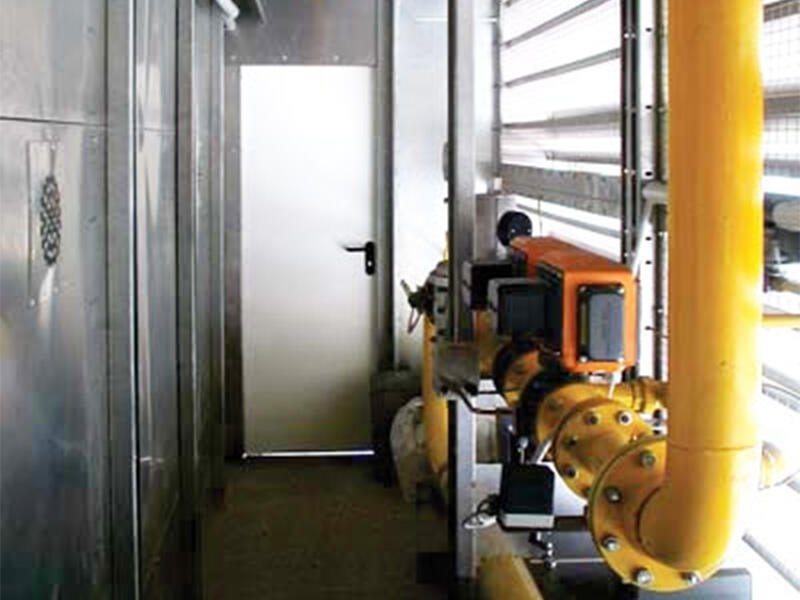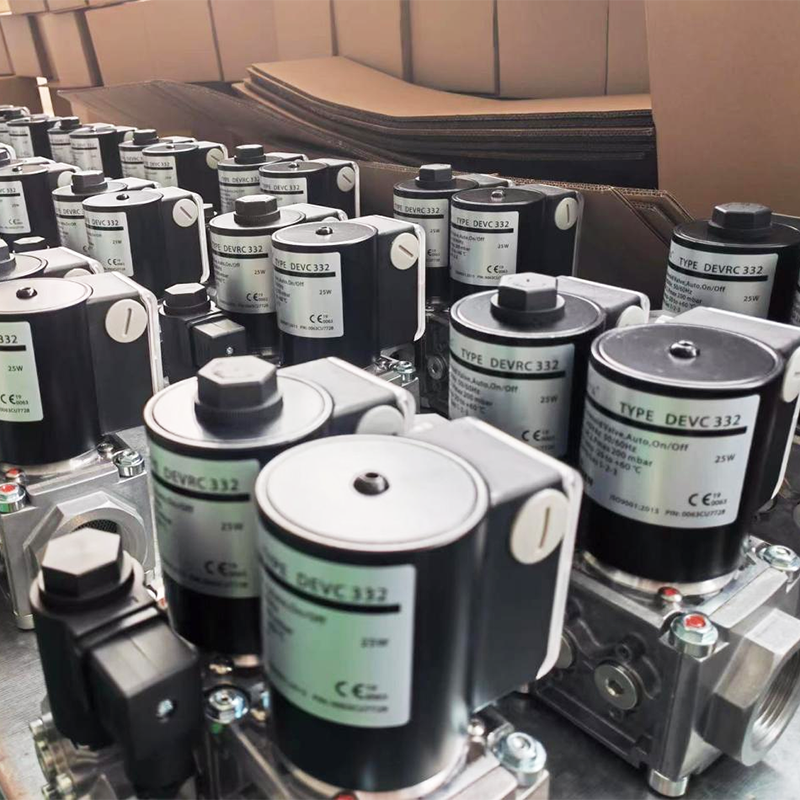Key Solenoid Valve Types and Their Functions
Direct-Acting vs. Pilot-Operated Valves
In solenoid valves, the difference between “Direct-Acting” and “Pilot-Operated” is fundamental. Direct-Acting solenoid valves either open or shut whenever there is request and are actuated by magnetism and not by a pressure difference. That makes them well suited for applications that require a quick response, such as automotive systems or small HVAC units. Pilot-Operated Valves, meanwhile, rely on the pressure difference of the system to help it operate. These valves are commonly used for high-flow and high-pressure applications, for example in industrial gas burners, where greater fuel efficiency and reduced energy consumption are important. Direct-acting is very responsive, but Pilot-Operated tends to be more energy efficient, and are suitable for larger systems that need to run longer periods of time.
Normally Closed vs. Normally Open Configurations
Solenoid valves come in two types: Normally closed (NC) and Normally open (NO). A Normally Closed valve closes when electrically de-energized, open when energized and is used for safety, emergency shutdown systems as well as HVAC (heating ventilation and air conditioning). On the other hand, a Normally Open valve is open when not energized and closed when it is. This arrangement is advantageously in applications wherein the valve is to be normally open to flow, for example, in sprinkler systems. There are advantages for each of them, such as an NC valve can fail safe by shutting off when power is lost, and an NO valve can function open until a signal tells it to close. As such, the decision of NC versus NO should be based on the particular safety and operating objectives of the application under consideration.
Specialty Valves for Extreme Conditions
Where conditions are harsh, such as at high temperatures or pressures, specialist solenoid valves are essential. These valves are built with durable materials such as stainless steel or fluoropolymers to endure severe conditions, and to provide long term use. In applications where an equipment is not running due to a fault, as in chemical processing or aerospace manufacturing, where reliability of operation is crucial, the role of these valves is very critical. Specialty Valves Specialty valves provide the security of stringent certification requirements for compliance with industry regulations that apply to, for example industrial or furnace oil burner systems. With the selection of the appropriate valve materials and certifications, industries can count on a closure system that will work reliably even under the most severe conditions.
Applications in High-Efficiency Combustion Systems
Industrial Gas Burner Valve Requirements
For industrial gas burners also, gas valves are necessary for both efficient combustion and safety. These valves must allow for accurate control of fluid flow and comply with the harshest of safety regulations. Valves with ASME and ISO standards and ratings also offer compliance to a specific efficiency requirement which is an important feature in industrial environments. For example, the behavior of the valve may have an influence on the overall combustion efficiency with a reported decrease in fuel consumption of up to 15% when the performance of the valve system is ideal. Sizing accurate and pressure rating applications are essential for high efficiency systems, as the design fully supports the required gas flow from the burner.
Optimizing Furnace Oil Burner Performance
Effective performance of Furnace oil Burner valves desired for tuning of valve design for better fuel control. For instance, it has been demonstrated as a case study that combustion efficiency is improved and emission decreased up to 25%23. Solenoid gas valves help to guarantee a constant flow of gas, regardless the changes in operating conditions, which is essential to efficient furnace operation. It is therefore essential to select the right materials for the valves such as stainless steel and fluoropolymers to avoid clogging and breakdowns, especially in critical environments where dependence is crucial.
Commercial Gas Burner Safety Features
Industrial gas burners have a relatively large number of security components with a special reference to solenoid valves which provide the emergency stop features. These characteristics are in compliance with well-known safety norms and rules (such as UL, CSA certifications) and affect the design and application of such burners. Contemporary flame safety systems, such as flame sensors, are used in conjunction with solenoid valves to maintain the correct flow of air and gas in a furnace. The examination of failure scenarios demonstrates the significant safety benefit of redundant arrangements that provide back-up capability when the primary system fails. This meticulous attention to safety is a necessity in the commercial realm where the repercussions of a system malfunction can be severe.
Critical Factors for Valve Selection
Pressure Ratings and Flow Capacity
When maintaining and using valves in a variety of applications, pressure ratings and flow capacity are important. These three characteristics directly affect the capability of the valve design to control and deal with actual operating requirements. Underestimated valves can result in catastrophic failures in the industrial sector and can be quite costly. “For example, one found in an oil refinery showed not installing a valve capable of handling pressure caused a plant to shut down, at a cost of millions, when the valve and damage it caused was discovered. In order to prevent this, the necessary ratings need to be determined, using, among others, environmental and operating conditions. Industry standards, such as those written by the American Society of Mechanical Engineers (ASME), are good benchmarks to use in assessing whether a valve is performing well across industries.
Material Compatibility With Media Types
Material compatibility is a key factor when selecting valves because of the wide variety of media used in industrial applications. Corrosive and non-corrosive environments require special materials to protect against degradation. The results of small scale tests are frequently indicative as to how materials behave in relation to rates of utilisation, and the effects of chemical characteristics as well as compatibility with temperature. For instance, valves in contact with acidic fluids require corrosion resistant materials. Customarily, products like stainless and higher end alloys are the best choices for such environments, ones that provide not only long wear, but resistance. It is important to match the materials with the chemical properties, like pH, to ensure the valve will last and remain operational.
Temperature Tolerance in Harsh Environments
Temperature resistance is critical with a solenoid valve in harsh conditions. Therefore, valves must be able to resist and perform despite temperature extremes. For example, in oil and gas operations, valves often are subject to extreme temperatures – either very hot or very cold – and thus have to be engineered accordingly and made with appropriate materials. All historical statistical data indicate that there is good reason to believe that certain valve designs (which have already undergone extensive testing and certification) are conservatively over-designed. That way, for example, a valve can be provided to be robust even under difficult operating conditions. Additionally, it may be advantageous to provide for insulation and heat shielding to reduce the impact of temperature extremes, thus preserving the mechanical integrity and performance of a valve of this nature in the field.
Industry-Specific Solutions and Use Cases
Precision Control in Medical Ventilators
Soval is a key component in medical ventilators, delivering accurate flow control that is critical in patient care. They are vital for the responsiveness of life-support systems, as its importance has been documented in medical literature indicating the necessity of timely and accurate supply of air. When valve components for medical devices are manufactured, regulatory compliances are of the highest priority, defined by standards which protect the safety of patients. Advancements in valve technology further increasing reliability of operation have led to safeties and precision required on medical ventilators.
Oil Burner Heat Exchanger Integration
The combination of solenoid valves with heat exchangers in oil burner systems results in an improved energy performance, that is very important in the field of commercial gas burner applications. Well-performed installations indicate noticeable efficiency enhancements, which do offer good case studies for industrialists. The key to successful integration is valve placement and control systems, which allow optimal heat transfer and lead to excellent systems. The product life and performance are thereby enhanced especially in high efficiency oil burner systems by attention to best system design practices, that is avoiding architecture traps.
Hatchery Temperature Regulation Systems
solenoid valves play a vital role in hatchery systems to control temperature, and thus good breeding environment. Studies in aquaculture have shown a direct relationship between accurate temperature control and ability to achieve hatch rates, indicating that effective temperature management is mandatory. Automation and monitoring control systems give management accurate, robust control over the booms. The choice of these culverts is depending from their capacity of operating under different external temperatures keeping a good efficiency, making their use, smart and sustainable for hatchery temperature control system.



